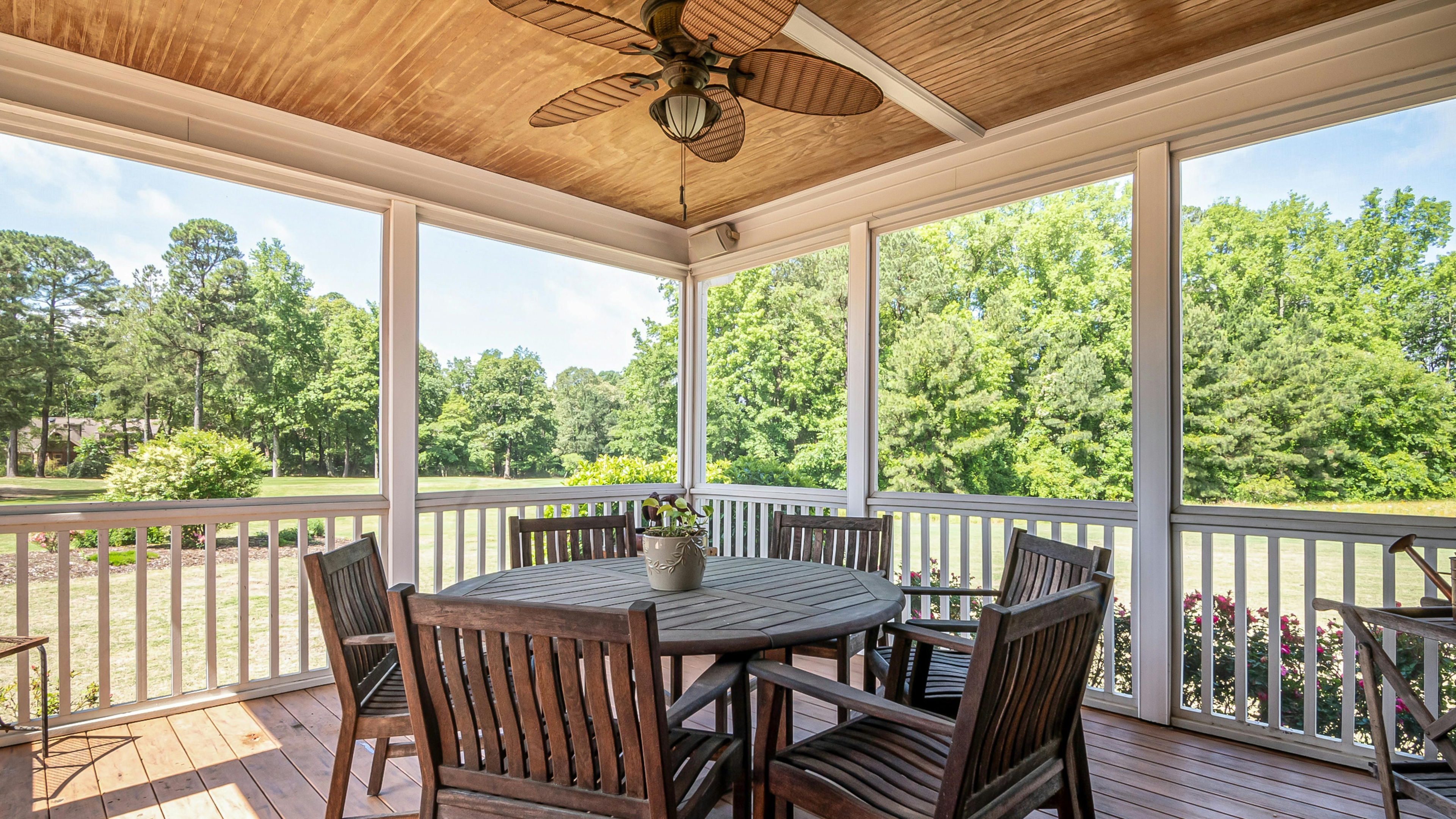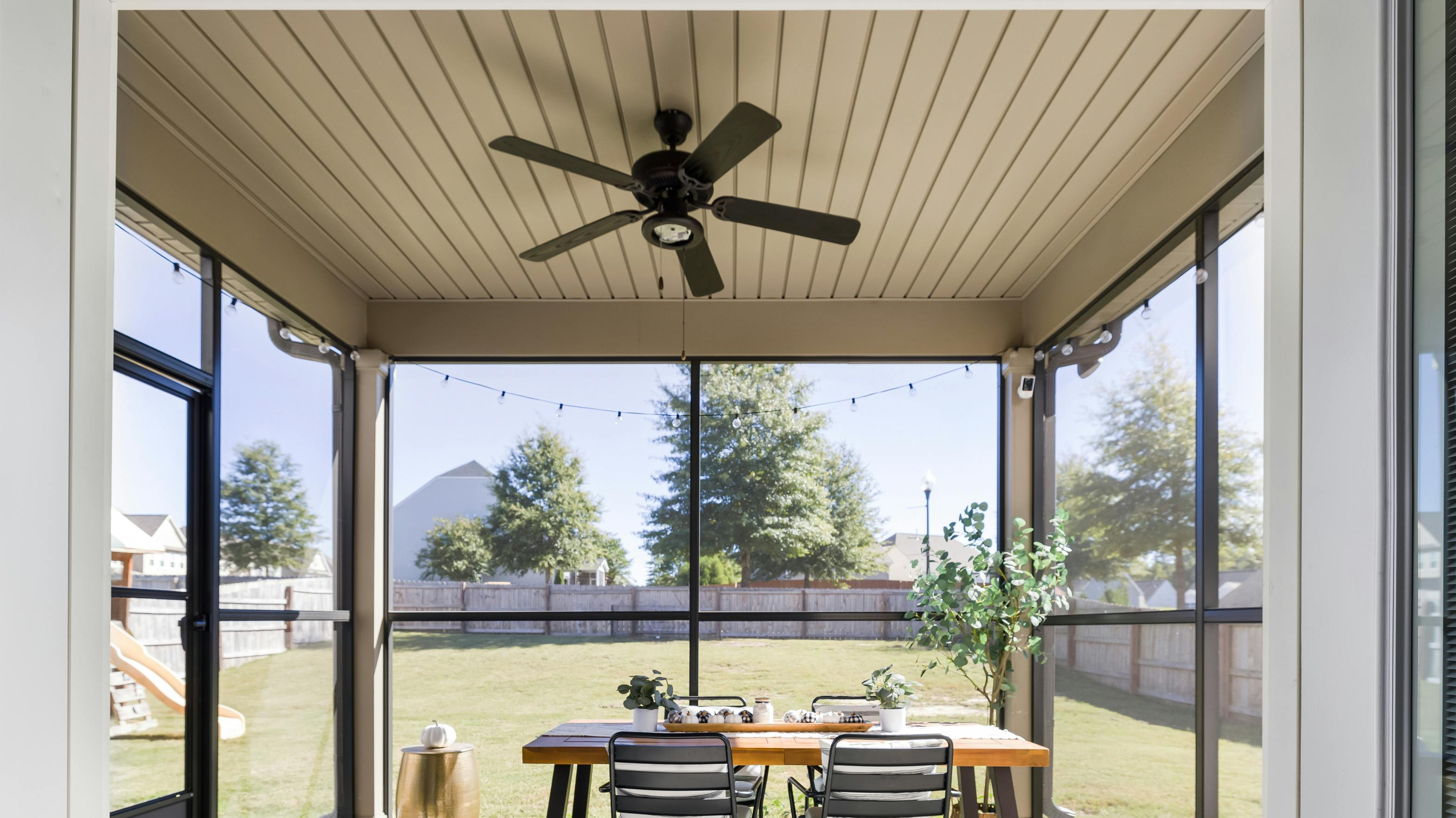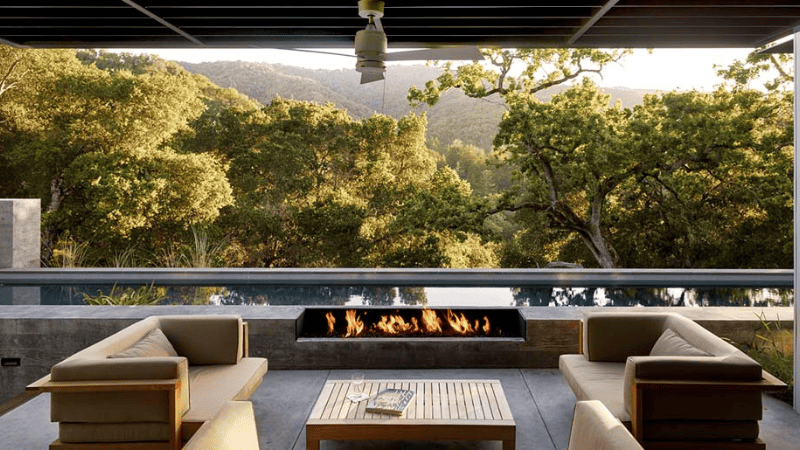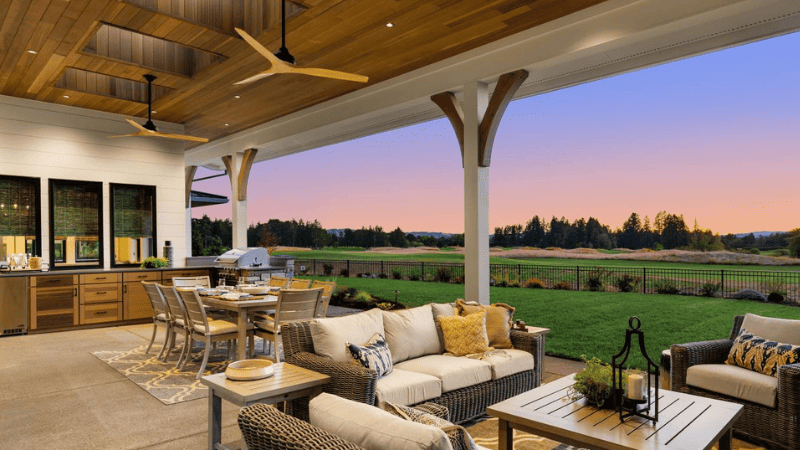If you are looking wholesale lighting solutions, click here.

Outdoor fans offer much-needed relief during hot summer backyard barbecue parties. Selecting the right outdoor fan is crucial for comfort and functionality in outdoor spaces. With so many designs, size choices, and variations, choosing the best solution can be challenging.
In this article, we’ll explore the basics of outdoor ceiling fans and highlight essential tips to guide your decision-making process.
Outdoor ceiling fans are specially designed for outdoor spaces such as patios, decks, porches, gazebos, or other areas exposed to the elements. These fans are constructed to withstand weather conditions like rain and humidity, and they often feature materials and finishes that resist rust and corrosion.
These fans can be differentiated from regular indoor fans by their UL Rating. UL is an international product certification that distinguishes parts that meet certain scientific safety, quality, or security standards.
Outdoor ceiling fans often come in a combo unit, with an LED light in the center surrounded by fan blades. These fixtures combine cooling and illumination functionality in an efficient and stylistic design.

Outdoor ceiling fans are often labeled as damp or wet rated depending upon their water resistance.
Damp-rated ceiling fans are UL-certified for moisture resistance. These fans are excellent in covered outdoor applications as long as they are not directly exposed to rain, snow, or splashes of water.
Covered outdoor spaces such as a patio, porch, or lanai.
Wet-rated fans have a more robust design that has higher moisture resistance and can withstand splashes of water. Moderate to heavy rainfall and the occasional snow coverage are no challenge for these water-tight ceiling fans.
Exposed outdoor spaces such as a pergola, gazebo, or deck.

Choosing the right outdoor ceiling fan is all about identifying your application and picking a design that matches your requirements. Here are a few simple tips to help you get started on your right ceiling fan for your outdoor project.
The size of a fan is determined by the size of its blades and is measured as the diameter of the fan blades’ coverage area. Fan size or blade span is directly proportional to the amount of airflow.
A larger fan will result in more air movement even at slower speeds. But it will occupy more space and consume more power. As a general rule, outdoor ceiling fan size should be between 30″-50″. You can also see the chart below for a more detailed breakdown.
| Fan Size (inches) | Space/Room Size (feet) | Examples |
| 24″ to 29″ | less than 50 sq. ft. | Hallway, Laundry Room, Closet |
| 29″ to 36″ | up to 75 sq. ft. | Bedroom, Large Bathroom, Small Dining Area |
| 36″ to 48″ | up to 150 sq. ft. | Bedroom, Large Bathroom, Small Dining Area |
| 48″ to 56″ | up to 250 sq. ft. | Large Living Room, Large Patio |
| Over 56″ | up to 400 sq. ft. | Warehouse, Great Hall |
A download (often called a drop rod) is a ceiling fan extension system that increases the fan distance from the ceiling. It is a sturdy pipe that keeps the ceiling fan at the desired distance from the floor and prevents any unwanted swinging motion.
Ceiling fans work by moving air from the top to the bottom. Fans mounted high up will need to run faster and louder to push air towards the floor. However, fans installed too close to the ground can become a safety hazard.
The ideal height for a ceiling fan is 8-10 ft. above the floor, a safe distance from the guests that still maintains excellent airflow. Check the chart below for a more detailed breakdown.
| Ceiling Height (feet) | Downrod Pole Length (inches) |
| 9 ft. | 6″ |
| 10 ft. | 12″ |
| 11 ft. | 18″ |
| 12 ft. | 24″ |
| 13 ft. | 36″ |
| 14 ft. | 48″ |
| 15 ft. | 60″ |
| 16 ft. | 72″ |
Ceiling fans support both AC and DC motors. AC (alternating current) motors run on the 110-120v line current coming to our house from the grid. These fans have a lower upfront cost and require only basic electrical work to install.
DC (direct current) motors step down the 110-120v AC to a more reasonable 12-24v DC. These motors are more energy efficient than AC ones. The less efficient AC motors generate more heat which increases the surrounding air’s temperature resulting in the fan blowing heated air downward.
Direct current motors are also more stable and allow for finer fan speed controls.
Modern ceiling fans come with a lighting solution built into the fan hub. A common problem with outdoor lighting is the lack of mounting points for the light fixtures. You typically have to resort to wall-mounted lighting, which leads to unwanted glares and shadows.
With a ceiling fan in the mix, your two electrical devices will be fighting against each other for precious ceiling real estate. Luckily, ceiling fan lights consolidate your two ceiling-mountable devices into one neat package.
LED lights are the only sensible choice when it comes to ceiling fan lights. They are energy efficient, smaller, and brighter than traditional lighting solutions.
Standard outdoor lighting should be 800-1000 lumens (measurement of light output). LED bulbs take approximately 1/10th the energy of incandescent to produce the same amount of light.
| Lighting Technology | Incandescent | Halogen | CFL | LED |
| Wattage Required to Generate 800-1000 lumens | 75 Watts | 65 Watts | 15 Watts | 8-10 Watts |
A big advantage of outdoor ceiling fans comes from the wide range of sizes and design options available to consumers. From luxurious modern outdoor fans to more subtle rustic ones, you can pick a design that fits perfectly into your outdoor design.
You can even customize and fine-tune your ceiling fan design. Choose the number of ceiling fan blades you want, get the right fan size, pick the best color, and get one that can push the most air.
Your perfect ceiling fan is one that you customize to meet your outdoor space’s aesthetic language.
Ceiling fan quality can be determined by its material choice and component efficiency. Moisture damage is a big threat to outdoor fans. So, be on the lookout for sturdy rust-proof materials like stainless steel, aluminum, or durable ABS plastic.
Additionally, you want an outdoor ceiling fan with a UL rating for water resistance and an ENERGY STAR rating for low power consumption.

Air movement from a ceiling fan is determined by the size of the fan blade and its rotation speed. The faster-spinning fans will generate more airflow and more noise. To reduce the noise level of your outdoor cooling setup, you can get an oversized fan and run it at a lower speed.
A larger fan size will also ensure you have that extra bit of cooling for those exceptionally hot summer days.
There are three common fan controls available for outdoor units- pull chain, wall switch, and remote. Modern fans support several new wireless control functions.
You can get an IR (infrared sensor) a controlled outdoor fan that operates similarly to a TV remote. Or you can get a fancy Wi-Fi-controlled ceiling fan that pairs with a smartphone app and allows you to remotely operate your ceiling fan from anywhere around the globe.

ABS plastic fan blades are the best option for outdoor fans as they are moisture and corrosion-resistant and safe for nearby birds who accidentally bump into them.
A 30″ ceiling fan is more than enough for a small patio that is under 50 sq. ft. For a medium-sized patio, 150 sq. ft. a 40″-44″ fan is recommended.
A 36″ UL wet-rated ceiling fan, with 4 fan blades is generally the best option for any given outdoor application. Look for fans with stainless steel components and high-quality composite blades.
The airflow rate of a ceiling fan increases with the number of blades. Thus, for most outdoor applications a ceiling fan with 3 or more blades is recommended. More fan blades also mean greater power draw and less noise.
Outdoor ceiling fans are an excellent choice for residential and commercial spaces. From gentle breezes on those outdoor barbecues to strong gusts that cool down your porch on those harsh summer days, a quality ceiling fan has got you back.
Choosing the right one is all about assessing your outdoor cooling needs and finding a fixture that meets all your requirements. Before you start, first survey your mounting location and see if you need larger fans or a download extension.
A well-placed small fan will yield better results than a poorly placed large one. Finally, always buy UL-certified ceiling fans for long-lasting and hassle-free operations.
Risun is a leading Supply Chain Management Service provider that has purchased over 10k+ SKUs of lighting products. We connect our discerning clients with trustworthy and reputable electronics manufacturers, ensuring seamless and reliable transactions, and can meet all kinds of product needs for your business.
Choose from a diverse collection of high-quality Ceiling Fans for your business and let Risun handle everything from sourcing to negotiations to UL-certification compliance, while you sit back and focus on your business.
Our One-Stop Lighting Supply approach to business ensures clients get the best products at the lowest prices. So don’t miss out on this incredible opportunity and Contact us Now!
Comprehensive Lighting Solutions for MRO Wholesalers and Professionals
send your inquiry
Hi, I'm the author of this post, and I have been in this field for more than 15 years. If you want to wholesale lighting fixtures or lighting related product, feel free to ask me any questions.
Learn More >>Download our catalog to view all of our lighting products.
Ready to get started ?
Send Your InquiryOur team will get back to you promptly

please
download
Get notified about new products
Our team will get back to you promptly!
Add your first comment to this post